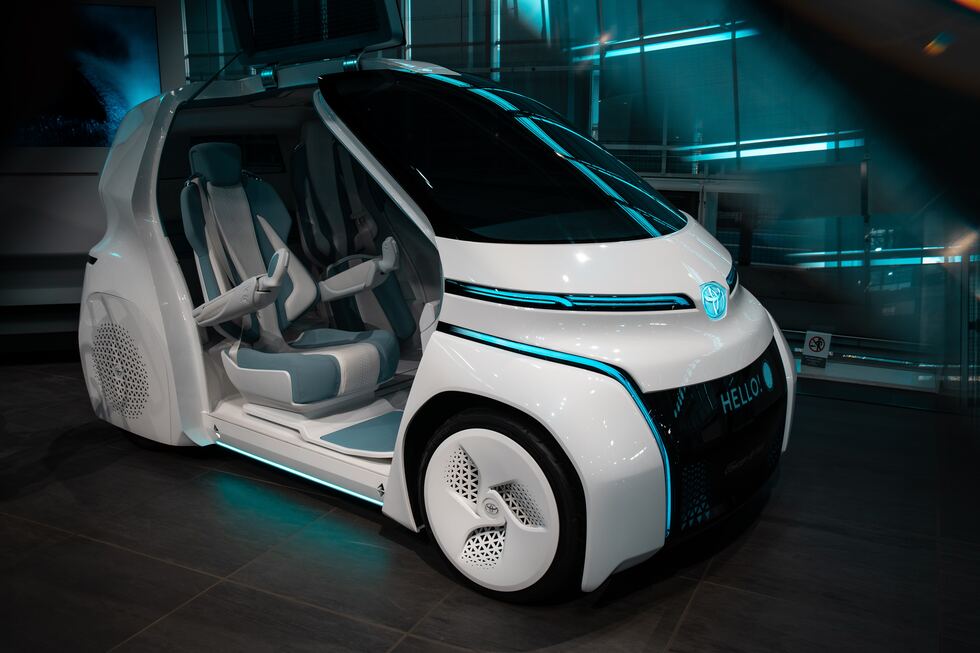
In an ever-accelerating age of innovation, our relationship with transportation is on the brink of profound transformation. Cast your thoughts forward to an imminent future where the pride and practicality of personal car ownership are replaced by a new paradigm: autonomous vehicles seamlessly operating not as mere vehicles, but as a holistic service. This isn’t about just taking us from point A to B, but about an integrated mobility experience, tailored to individual needs, without the strings of maintenance, parking, and fuel costs.
But the transportation metamorphosis doesn’t stand alone. A concurrent, equally groundbreaking shift is taking root in our professional spheres. The traditional notion of “going to work” is being redefined. As remote work becomes the norm rather than the exception, our daily commutes, those hours spent in traffic jams or crowded public transports, begin to wane. This change not only offers us more personal time and flexibility but also means fewer cars on the roads, less congestion, and a significant reduction in carbon emissions.
Now, visualize the confluence of these two transformative movements. Cities no longer choked by endless lines of vehicles, but offering expansive green spaces, recreational zones, and pedestrian pathways where roads once dominated. An environment where the morning rush hour is an outdated concept, replaced by the gentle hum of autonomous vehicles serving those who still need physical transit. Meanwhile, many of us, connected through digital workspaces, will be contributing productively from the comfort of our homes or community hubs.
This isn’t merely a futuristic fantasy. It’s a tangible blueprint of a world where technology and societal evolution converge to offer a more sustainable, efficient, and harmonious urban existence. Yet, like all major shifts, it comes with its own set of challenges and questions. How do we ensure equitable access to these autonomous services? How do urban planners redesign cities that have been car-centric for decades? What happens to industries and jobs linked to traditional modes of transport?
It’s a rich tapestry of opportunities interspersed with challenges. But as we stand at this crossroad, poised to redefine our urban futures, it beckons us to explore, understand, and shape this evolving narrative. Let us delve deeper into this envisioned world, understanding its multifaceted implications and the transformative promise it holds for our urban landscapes.
Driving Change: From Personal Comfort to Collective Gain
Amidst this vision of transformation, an important reflection surfaces: Why should we embark on this path, especially when it requires letting go of deeply ingrained habits and comforts that have become second nature to us?
For many, the personal car isn’t just a mode of transportation; it’s a symbol of independence, a rite of passage, and often, a cherished possession woven with memories. Similarly, the daily ritual of commuting to work, the office chatter, and the physical boundaries separating professional and personal life have their own nostalgic value. Yet, as with every epoch of progress in human history, the lure of a better future often demands letting go of the familiar.
Our planet is at a critical juncture. Environmental concerns are no longer distant alarms but immediate calls to action. By reducing our dependency on personal vehicles, we directly contribute to lesser emissions and a cleaner environment. Autonomous vehicles, with the potential for electric propulsion and optimized route efficiencies, further the cause of environmental sustainability.
Moreover, the societal benefits are compelling. By merging autonomous mobility with telecommuting, cities can reclaim vast spaces currently dedicated to roads and parking, allowing for more green spaces, parks, and community areas. This can drastically improve the quality of urban life, fostering communities that are more connected and less isolated by the barriers of traffic and urban sprawl.
Economically, while certain sectors like traditional auto manufacturing or urban commute services might face challenges, new avenues of opportunity open up in technology, urban planning, and digital infrastructure sectors.
Lastly, on a deeply personal level, the shift promises a life with less stress from daily commutes, greater work-life balance, and more time for what truly matters - family, hobbies, and personal growth.
Embracing this future thus isn’t just about adapting to technological advances. It’s about embracing a broader vision for a more sustainable, healthier, and community-driven world. And while the journey involves breaking free from some cherished habits, the horizon promises a world that’s better for us, our children, and generations to come.
The Autonomous Future: Mobility as a Service (MaaS)
| Benefits | Challenges |
|---|---|
| Reduced Traffic Congestion | Accessibility and Availability |
| Environmental Impact | Privacy Concerns |
| Urban Planning | Job Market Shift |
| Safety | Technical Hurdles |
| Economic Sense | Social and Cultural Acceptance |
The Telecommuting Revolution
The rise of remote work and telecommuting offers a complementary avenue to our changing transport dynamic. With fewer reasons to travel, the demand on transport infrastructure could be further reduced.
| Benefits | Challenges |
|---|---|
| Enhanced Work-Life Balance | Company Culture |
| Global Talent Pool | Data Security |
Merging Horizons: Autonomous Mobility Meets Telecommuting
In a world already adapting at warp speed, two of the most groundbreaking ideas—autonomous mobility and telecommuting—are set to intersect, heralding a transformative era for how we live and work. Consider the synergy: On one hand, we have autonomous vehicles poised to optimize road utilization, reduce pollution, and reimagine public transport. On the other, telecommuting promises to further reduce the need for daily travel, creating more fluid, flexible lifestyles.
The merger of these horizons isn’t just about reduced traffic or lesser office hours. It’s about urban areas blossoming into greener, more livable spaces, with parks and recreational zones replacing the miles of concrete dedicated to roads and parking. It speaks of a response to climate change that is both proactive and aggressive, leveraging technology and societal shifts in tandem.
But it’s not merely about transforming landscapes. It’s about fundamentally reshaping human experiences. Imagine a city where your workplace is as accessible as your living room, where transportation becomes a seamless service rather than a chore, and where urban design prioritizes humans, not vehicles.
Concluding Thoughts
Such a future, driven by the dual engines of autonomous mobility and telecommuting, presents a vivid, exciting panorama—a promise of cities that breathe easier, roads that hum with efficiency, and work that offers true flexibility. But this vision, as alluring as it is, does not come without its set of challenges. Technical intricacies, shifts in job markets, privacy concerns, regulatory hurdles, and the very fabric of societal acceptance all stand as gates to this envisioned future.
It is, therefore, imperative for all stakeholders—from visionary policymakers to pioneering technologists, from urban planners to everyday citizens—to engage, debate, and collaborate. The precipice upon which we stand is not just of innovation but of evolution—an evolution of our cities, our work, and, most fundamentally, our lifestyles. The journey ahead is as challenging as it is exhilarating, but with collective foresight and collaboration, a brighter, smarter, and more accessible world awaits.
Header Photo by Maximal Focus on Unsplash





